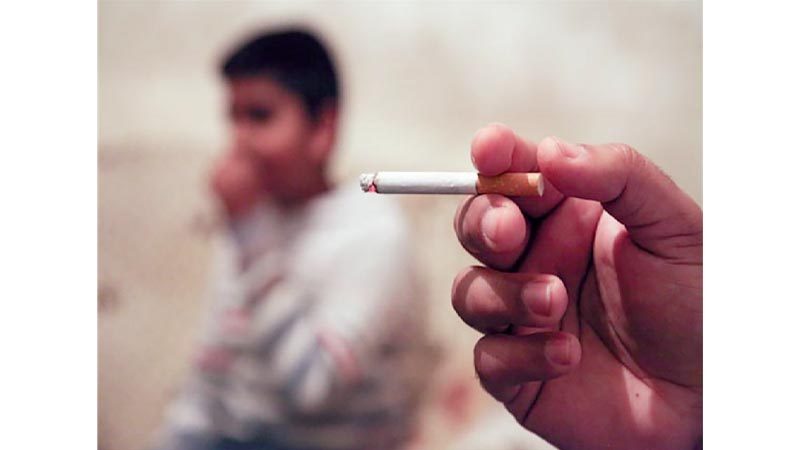Passive smokers increase alarmingly
Nearly 1.26 lakh people die annually in country

Despite ban on smoking in public places, numerous people are still continuing the malpractice everywhere, putting lives of others at risk through passive smoking. With the growing number of smokers in the country, the number of passive smokers by default is also increasing rapidly.
According to World Health Organisation (WHO), more than one million people annually die because of passive smoking around the world. Around eight million people die every year in the world for directly using tobacco, according to statistics of Bangladeshi anti-tobacco organisation Progotir Jonno Gyan (PROGGA). In Bangladesh, according to PROGGA, nearly 1.26 lakh people die every year for use of tobacco. At present, there are about 3.78 crore tobacco users in the country. Of them, 1.92 crore are smokers.
Mentionable, unintentional inhaling of smoke from other people's cigarettes, cigars, or pipes, is known as passive smoking. The smoke which the public are exposed to from smokers is termed as ‘second-hand smoke’ or ‘environmental tobacco smoke’. Mahfuzul Hasan Mehedi, National Officer of WHO told Bangladesh Post, “Obviously the growing number of tobacco users is an alarming issue now. Though the number of smokers is increasing gradually year by year, people still are carelessly getting indulged in the malpractice, putting serious health risks for the people surrounding them. By default, the number of passive smokers is also rising at an alarming rate.” “A smoker should quit smoking not only for his own betterment, but also for his near and dear ones who live around him,” he added.
However, data provided by Global Adult Tobacco Survey (GATS) conducted by Bangladesh Bureau of Statistics, says that a total of 27 lakh smokers have gone down in eight years from 2009 to 2017. According to experts, one of the main obstacles for the government is locally produced illegal cigarettes that evade tax. And policy makers must devise a framework to enforce smoke-free laws. The framework should also include interventions to reduce children being exposed to second-hand smoke at their homes.
Neuro medicine specialist and Professor Dr Aminur Rahman said to Bangladesh Post, “the risks of active smoking are well known. If you are struggling to give up smoking for your own health, you might find that the health of your own family or other members of your household to be a stronger motivation.” Pregnant women and children are most affected amongst sufferers of passive smoking, most people due to lack of knowledge don’t understand the fatal impact of smoking. After damaging lungs when they come for treatment, we fail because it turns cancerous, he added.
Mentioning further impact on children, he said “kids are particularly at risk for the effects of second-hand smoke because their bodies are still growing and they breathe at a faster rate than adults.” People who do not smoke who suffer long-term exposure to second-hand smoke have a 20 to 30 per cent higher risk of developing lung cancer. There is increasing evidence that passive smoking can increase the risk of nasal sinus cancer, throat cancer, larynx cancer, breast cancer, long- and short-term respiratory symptoms, loss of lung function, and chronic obstructive pulmonary disease among people who do not smoke.
According to an Australian Research, passive smoking increases the risk of coronary heart disease by 25-40% - almost the same level as a smoker. Second-hand smoke contains more than 7000 chemicals, with 69 cancer-causing chemicals. It has been confirmed as a cause of lung cancer in humans by several leading health authorities.


